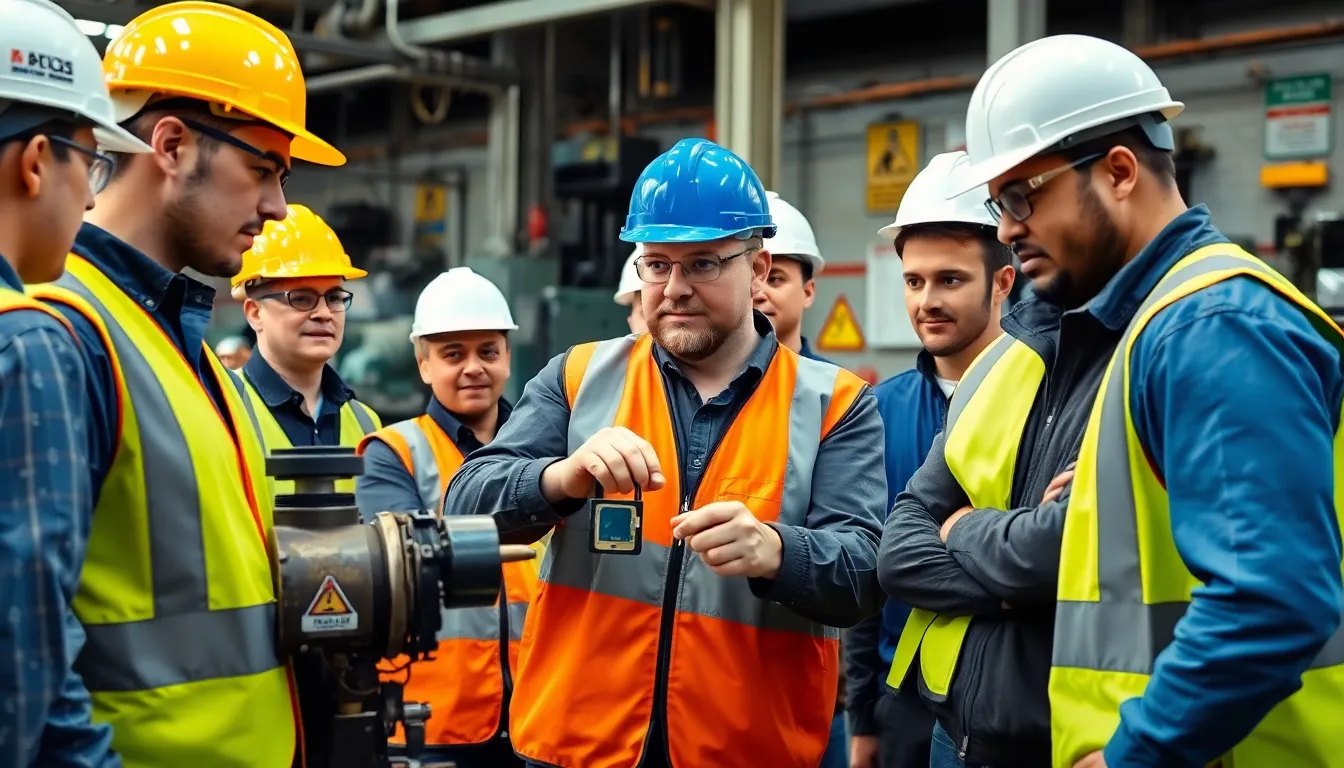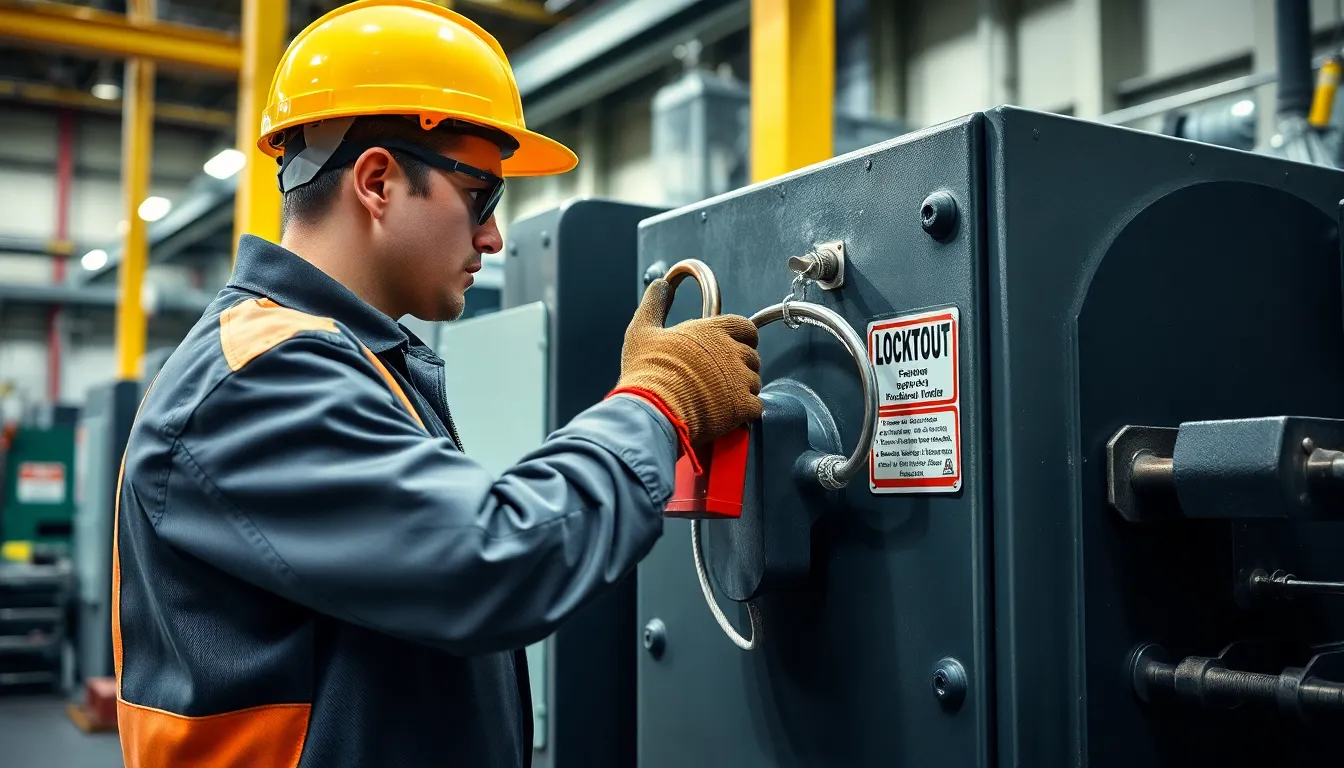Table of Contents
ToggleIn a world where the unexpected can throw a wrench in even the best-laid plans, lockout protections are the unsung heroes of workplace safety. Imagine a scenario where a worker accidentally gets locked out of a machine, leaving them at the mercy of fate and a very confused maintenance team. It’s like a bad sitcom waiting to happen, but with the right lockout protections in place, those cringe-worthy moments can be avoided.
Overview of Lockout Protections
Lockout protections serve as essential safety measures in various workplaces. These systems prevent accidental machine startups during maintenance or repair activities. Workers encounter significant risks without these safeguards, which can lead to serious injuries or fatalities.
Compliance with Occupational Safety and Health Administration (OSHA) regulations ensures that lockout procedures are correctly established and followed. Various components contribute to effective lockout protections. These components include lockout/tagout devices, energy control procedures, and employee training programs. Each element plays a crucial role in the process.
Implementing lockout/tagout devices prevents unauthorized access to hazardous machinery. Employees are empowered to control energy sources effectively, minimizing risks during maintenance. When procedures are not adhered to, the likelihood of accidents increases significantly.
Training programs educate workers about proper lockout protocols. Employees develop an understanding of specific risks and responsibilities regarding machine safety. By equipping staff with the necessary knowledge, organizations create a culture of safety that prioritizes employee well-being.
Regular audits and inspections help maintain compliance and address any gaps in lockout procedures. Continuous monitoring of these systems is vital for ensuring long-term efficacy. A commitment to regular updates keeps employees informed about potential hazards and equipment changes.
Lockout protections are an investment in workplace safety. They protect workers from unforeseen accidents and promote a culture of safety first. Businesses that prioritize these measures can enhance employee confidence and overall productivity while significantly reducing risk.
Importance of Lockout Protections
Lockout protections play a vital role in maintaining safety within workplace environments. They ensure that machinery remains completely controlled during maintenance, significantly reducing accident risks.
Enhancing Workplace Safety
Enhancing workplace safety involves safeguarding employees from potential hazards. Lockout protections act as preventive measures against unexpected machine startups during maintenance. Properly implemented protocols create a more secure atmosphere, as workers understand the importance of adhering to safety procedures. Moreover, training employees fosters a deep understanding of risks, leading to increased vigilance on the job.
Preventing Accidental Equipment Start-ups
Accidental equipment start-ups often result in serious injuries or fatalities. By utilizing lockout/tagout devices, workers prevent unauthorized access to hazardous machinery. Each device serves a critical purpose in controlling energy sources effectively. Additionally, clear energy control procedures guide employees on the correct isolation of equipment. Consistent application of these practices minimizes the potential for chaos during maintenance activities and reinforces the commitment to safety.
Types of Lockout Protections
Lockout protections come in several forms, each designed to address specific hazards in the workplace. Understanding these types ensures effective safety measures during maintenance and repair operations.
Mechanical Lockout Devices
Mechanical lockout devices physically prevent machines from operating. Examples include padlocks, hasps, and rigid lockout devices that secure energy-isolating mechanisms. These devices often feature unique keys to restrict access and prevent unauthorized use. Proper implementation of mechanical lockout devices reduces the risk of accidental startups during repairs. Workers benefit from knowing machines remain safely secured when undergoing maintenance.
Electrical Lockout Devices
Electrical lockout devices focus on controlling electrical energy sources. Items like circuit breaker locks and plug lockouts keep electrical equipment inoperable during maintenance. These devices often come with visual indicators to notify personnel that machinery is locked out. By implementing electrical lockout devices, organizations mitigate risks associated with unwarranted electrical access. Employees effectively protect themselves from potential electrical hazards while conducting maintenance tasks.
Lockout Tagout Procedures
Lockout tagout procedures provide a systematic approach for safely shutting down machinery. These procedures involve identifying energy sources, isolating them, and applying lockout devices. Each step includes placing tags that communicate danger and clearly indicate the work in progress. Consistent adherence to lockout tagout procedures reinforces compliance with OSHA regulations. Workers who follow these procedures increase overall safety and safeguard against unexpected machine startups during maintenance activities.
Best Practices for Implementing Lockout Protections
Effective implementation of lockout protections requires targeted strategies. Prioritizing employee training and conducting regular inspections are essential for maintaining a safe workplace.
Employee Training and Awareness
Training educates employees on the risks associated with machinery. Programs should cover lockout/tagout procedures and the safe handling of energy sources. Engaging workers in hands-on training sessions reinforces the importance of safety protocols. Regular refresher courses keep safety awareness high, ensuring workers stay informed about any updates in regulations. An environment that encourages open discussions about safety promotes diligence and accountability among all employees. Ultimately, enhanced awareness leads to a robust safety culture, where everyone recognizes their role in preventing accidents.
Regular Inspections and Audits
Conducting regular inspections ensures compliance with safety standards. Audits identify potential gaps in lockout procedures, allowing for timely corrections. A systematic inspection routine keeps devices functioning optimally and verifies that employees adhere to protocols. Documenting findings helps track trends and improve safety measures over time. Frequent audits also demonstrate management’s commitment to workplace safety, fostering trust among employees. By maintaining a rigorous inspection schedule, organizations can significantly reduce the likelihood of incidents associated with machine energy sources.
Challenges in Lockout Protections
Lockout protections face several challenges that can hinder their effectiveness in maintaining workplace safety. Understanding these obstacles is crucial for developing efficient safety measures.
Compliance Issues
Compliance issues arise due to varying interpretations of safety regulations. Different organizations may implement lockout protections inconsistently, leading to potential hazards. Inadequate training often exacerbates these compliance failures. Employees lacking training may not understand the importance of lockout/tagout procedures. Additionally, workplace audits sometimes overlook critical safety protocols, resulting in gaps that increase risk. Such oversight diminishes overall safety effectiveness and undermines employee confidence in the system.
Resistance to Change
Resistance to change poses significant challenges when implementing lockout protections. Employees may feel uncomfortable altering familiar routines, prompting reluctance to adopt new safety measures. Change can disrupt established workflows, leading to pushback from staff. Managers may struggle to communicate the benefits of these practices effectively, creating confusion regarding their importance. Regular reinforcement of the rationale behind safety protocols can alleviate these concerns. Building a culture that prioritizes safety enhances employee buy-in and fosters acceptance of necessary changes in procedures.
Conclusion
Lockout protections are vital for maintaining a safe workplace. By implementing effective lockout/tagout procedures and providing thorough training, organizations can significantly reduce the risk of accidents during maintenance activities. These measures not only protect employees but also foster a culture of safety that enhances overall productivity.
Regular audits and inspections keep safety protocols in check and ensure compliance with regulations. Addressing challenges like resistance to change and inadequate training can strengthen the effectiveness of lockout protections. Ultimately, prioritizing safety through these practices is an investment in both employee well-being and organizational success.








